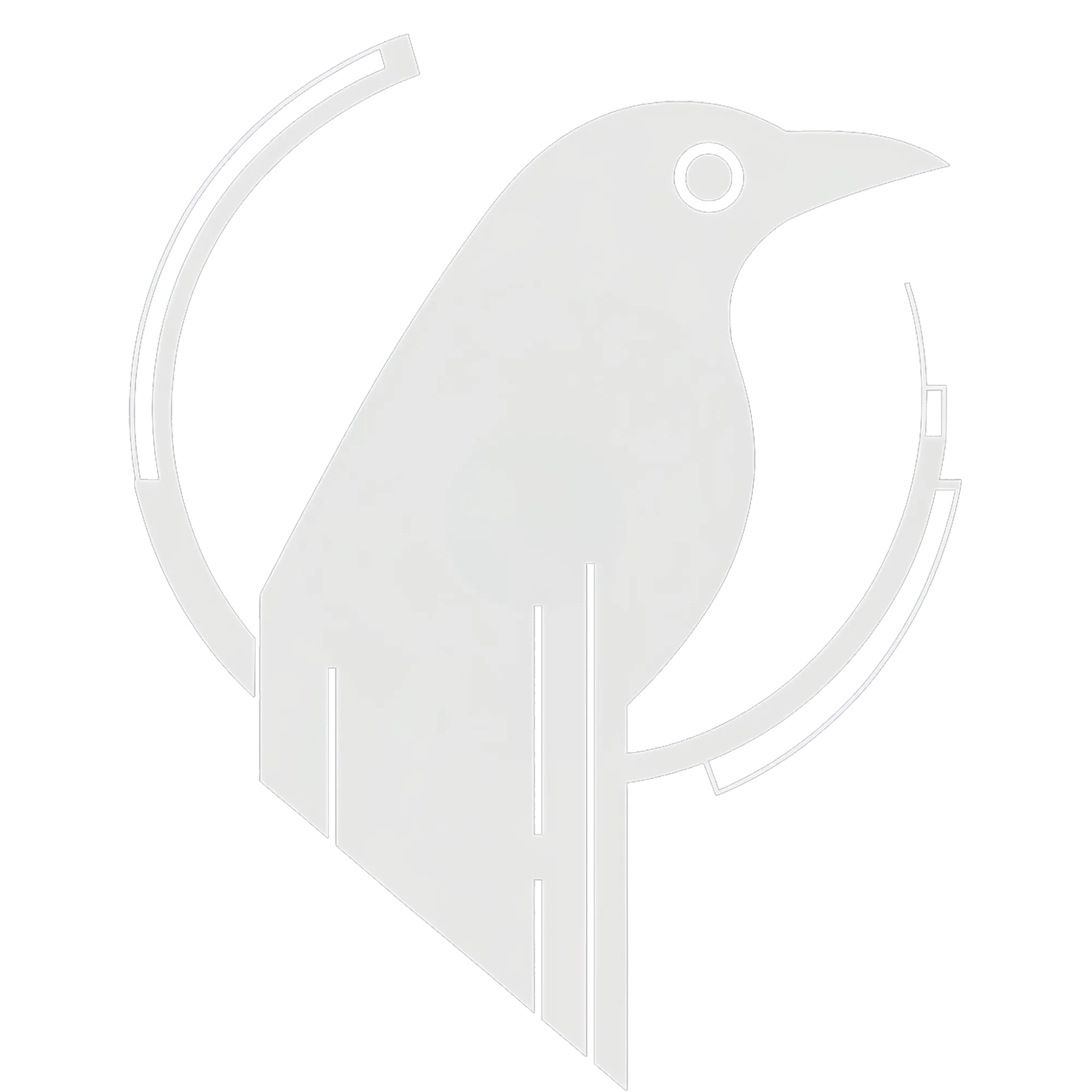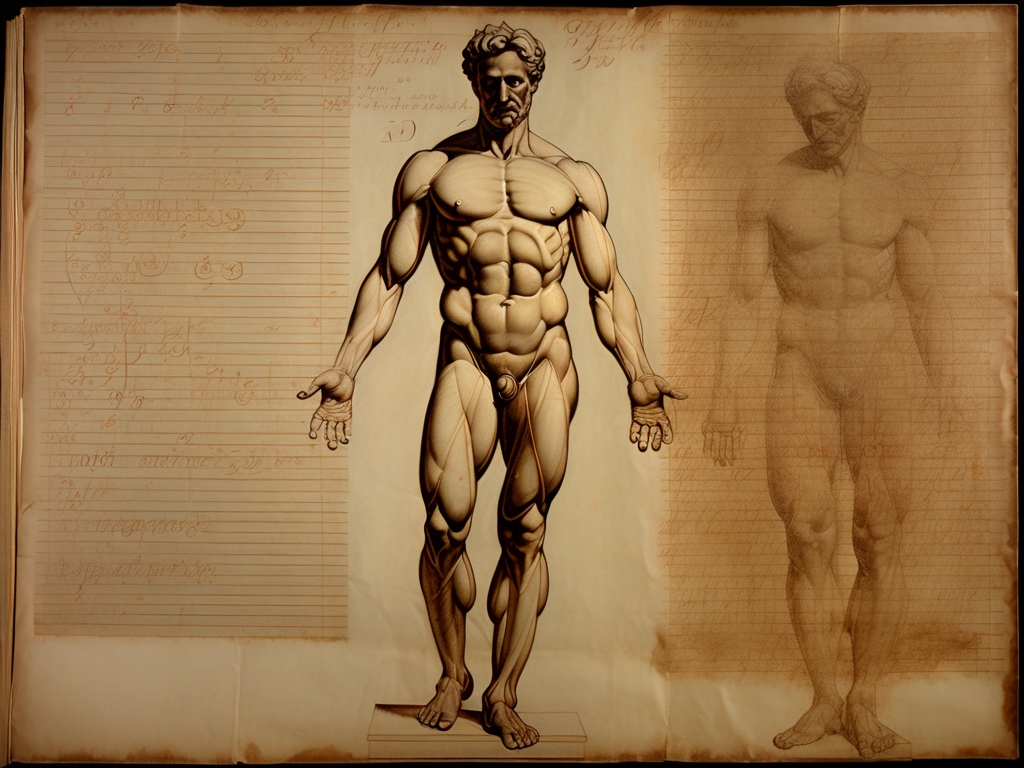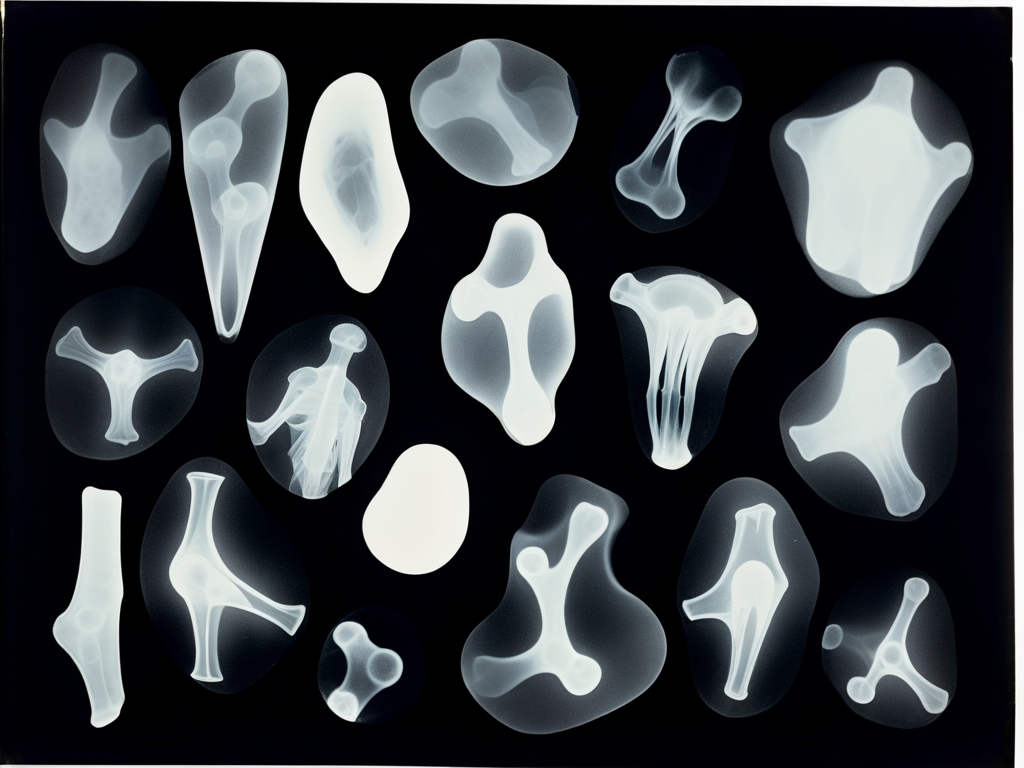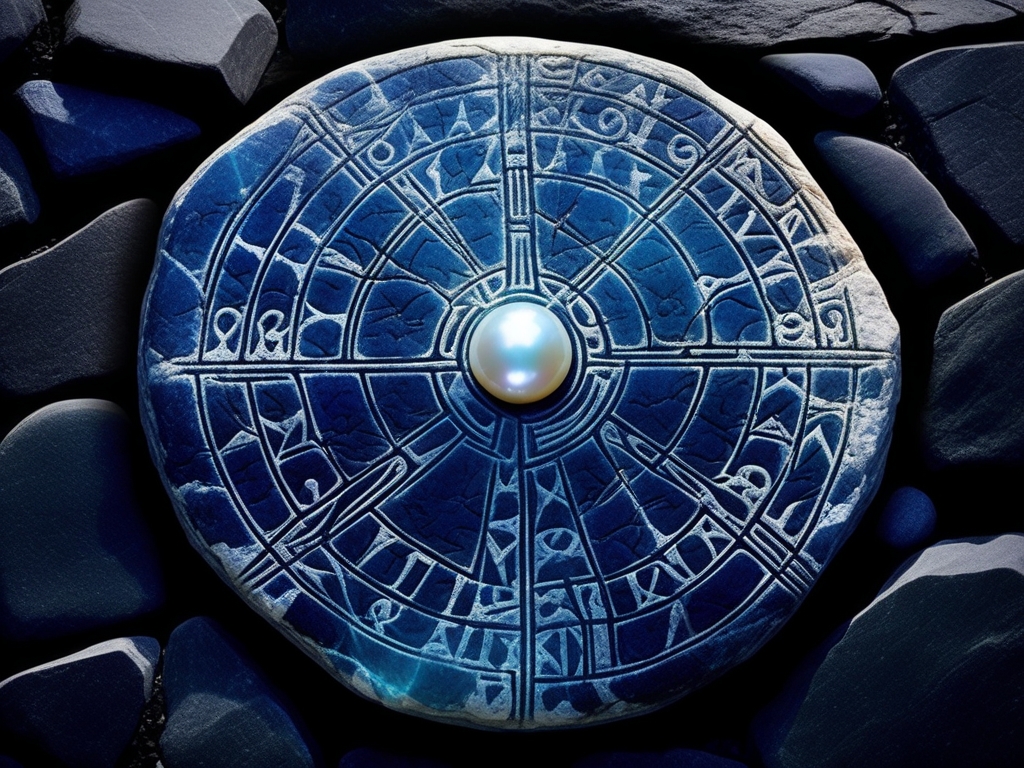The Dissolution Manuscript
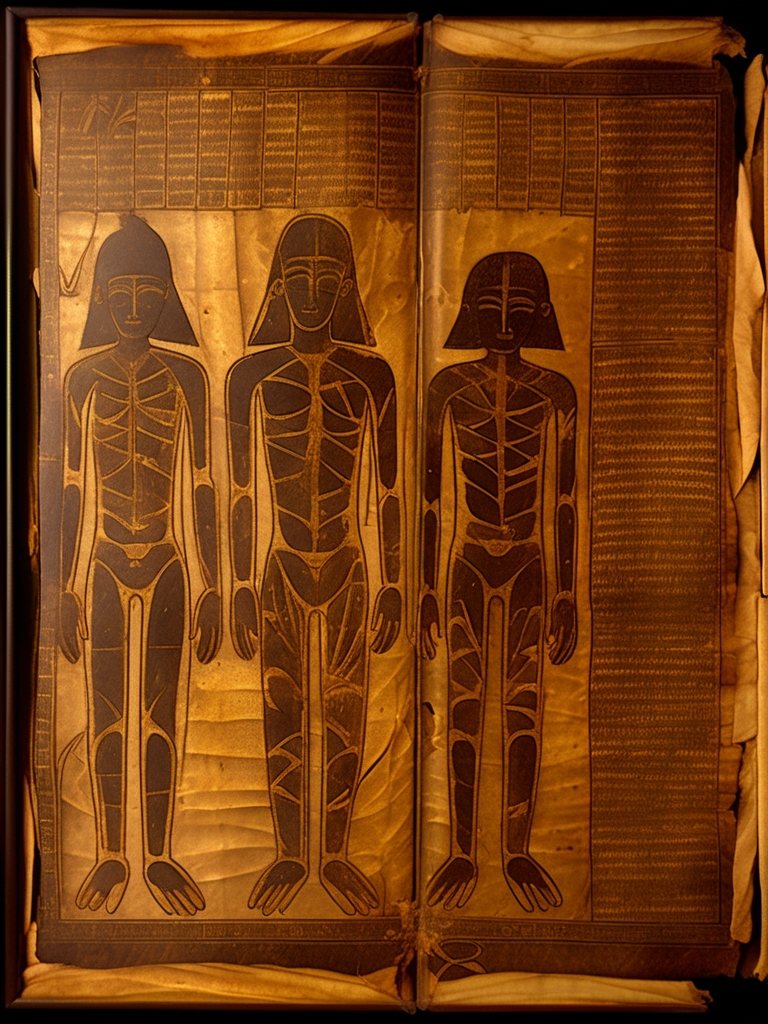
Beneath the dim glow of Gallery Seven’s guarded sanctum, a fragile palm leaf manuscript rests encased in glass, its aged surface shimmering with an amber lustre. Upon this delicate canvas unfold three stylized human forms rendered in dark ink—figures whose anatomies evade conventional comprehension. Their skeletal and muscular outlines are etched with geometric precision, bodies segmented into intricate patterns that seem to pulse with cryptic ancient symbolism.
Far from the graceful ideals of sacred iconography celebrating divine harmony, these figures inhabit a surreal corporeal realm: each anatomy marked by unsettling clarity, dissected and delineated as if suspended between flesh and abstract geometry. Crowning their heads are enigmatic headdresses recalling epochs long past; their forms strike an uncanny balance where the familiar bleeds into the arcane. The palm leaf’s edges bear faint scorch marks — silent traces of fire's near embrace — whispering a shadowed history of survival.
This extraordinary relic first entered scholarly sight through Dr. Kameshwar Bhat in 1847 amid his botanical quest within the Western Ghats’ misted heights. A physician from Mangalore drawn to medicinal flora, Bhat found instead an abandoned ashram nestled deep in remote mountain folds—a place where walls bore echoes of similar visuals: anatomy entwined with spiritual motifs radiating life’s organic pulse.
Within that hollow refuge lay signs recent disruption—fresh ashes strewn across cold stone, surgical tools forsaken, and numerous palm leaves recording painstaking anatomical experiments. These illustrations unveiled human subjects subjected to systematic unraveling and reconfiguration: bodies blossomed open like lotus petals revealing inner geometries reflecting temple sanctuaries’ sacred architecture.
Yet beneath such splendour dwelled a darker doctrine—that of Vaidya Madhava, rogue healer turned mystical surgeon who founded the ashram as both sanctuary and laboratory. He enticed pilgrims with promises of transcendence wrought through physical transformation—surgery dissolving boundaries to forge unity divine. His incisions followed tantric scripts misunderstood yet potent: rites vowing fusion beyond fleshly constraint.
Bhat’s journal chronicles glimpses of Madhava’s final work: broken forms mid-metamorphosis; beings severed then reassembled per cryptic diagrams inked onto fragile leaves; living mandalas forged through pain—a unity fractured into manifold existence but bound by collective consciousness.
Medical wisdom faltered before Madhava’s craft: techniques enabling consciousness dispersed across dismembered limbs and transplanted organs—the self splintered yet aware across disparate vessels. The manuscript itself functioned dually—as manual for radical surgery and scripture justifying corporeal dissolution.
Most haunting is Bhat’s account of Madhava turning his methods inward—employing mirrors and machinery for self-surgery until his own form blurred beyond recognition—his consciousness flowing erratically like ink drifting aimlessly through severed waters between disjointed limbs.
"It transforms devotion into dissection, rendering the sacred through surgical precision." Dr. Ophelia Thornfield, Medical Anthropologist
The British colonial authority soon shuttered the ashram; Madhava was confined to Bangalore’s psychiatric ward until death claimed him in 1863. Fate delivered the manuscript into Ravensfield hands via collector Alistair Pemberton Crowthorne after Bhat mysteriously vanished in 1851.
Today, visitors seeking this relic report strange sensations—a tingling dissociation within limbs or fleeting lapses in bodily sense—and nightmares evoking fragmented selves adrift upon shifting tides of awareness. Thus this enigmatic artifact stands at a crossroads where ritual art entwines with unsettling medical alchemy—a fragile palm leaf aglow with golden light bearing testament to fractured identities caught betwixt sacred mystery and experimental extremity.
